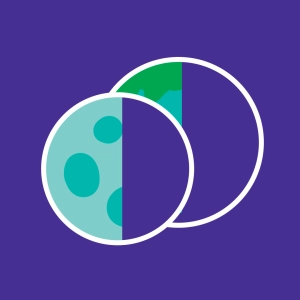 Moon phases vs. Earth phases
Moon phases vs. Earth phases
Moon phases are the different appearances of the Moon as seen from Earth, resulting from the relative positions of the Moon, Earth and Sun. Over the course of a 29.5-day lunar cycle, the Moon passes through eight main phases: new moon, first crescent, first quarter, waxing gibbous, full moon, waning gibbous, last quarter and last crescent. These phases are caused by the portion of the Moon illuminated by the Sun that is visible from Earth. For example, a full moon occurs when the Moon is in opposition with the Sun, allowing the side visible from Earth to be fully illuminated.
Just as we see Moon phases from Earth, an observer on the Moon would also see Earth phases. The Earth goes through phases complementary to those of the Moon: when we see a full Moon, a lunar observer would see a new Earth. This relationship is due to the same dynamics of solar illumination. Earth phases are an inverse reflection of Moon phases,
Note: Some scales are not respected for educational purposes. The Moon should be further from the Earth and the Earth further from the Sun.
